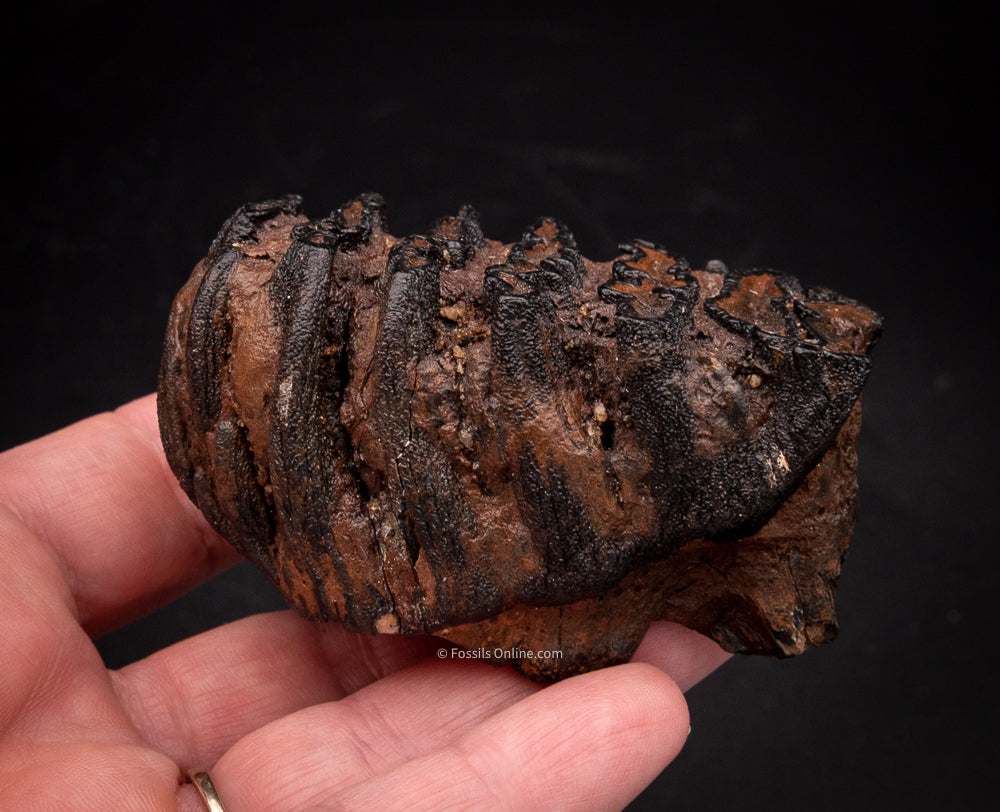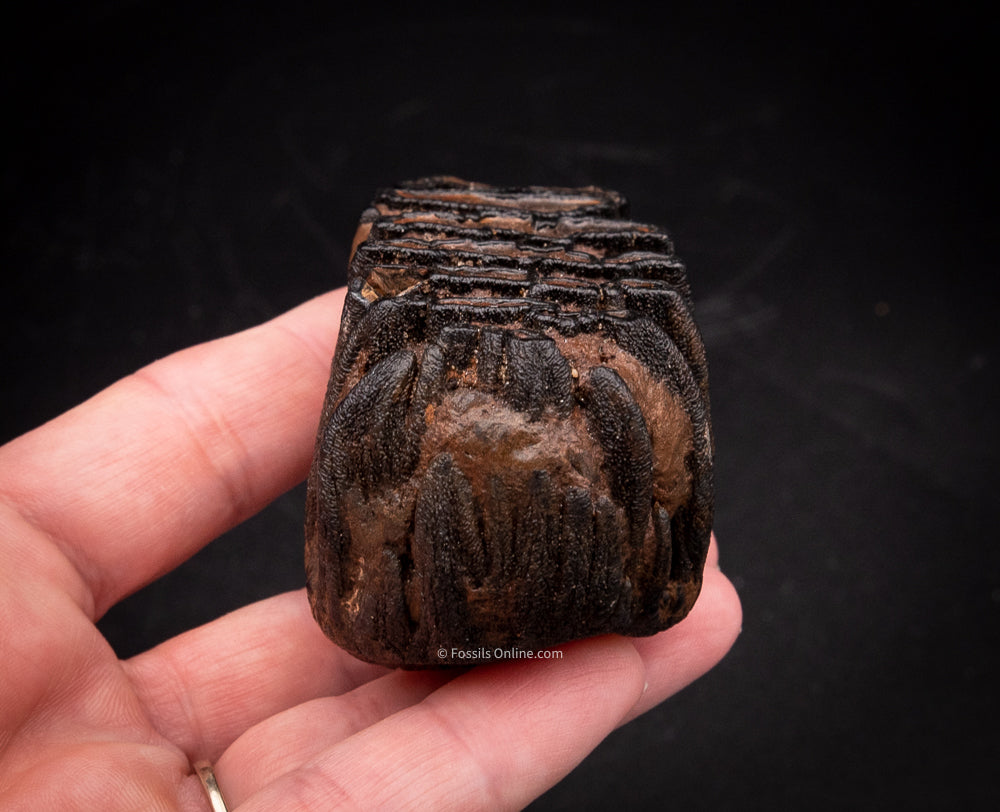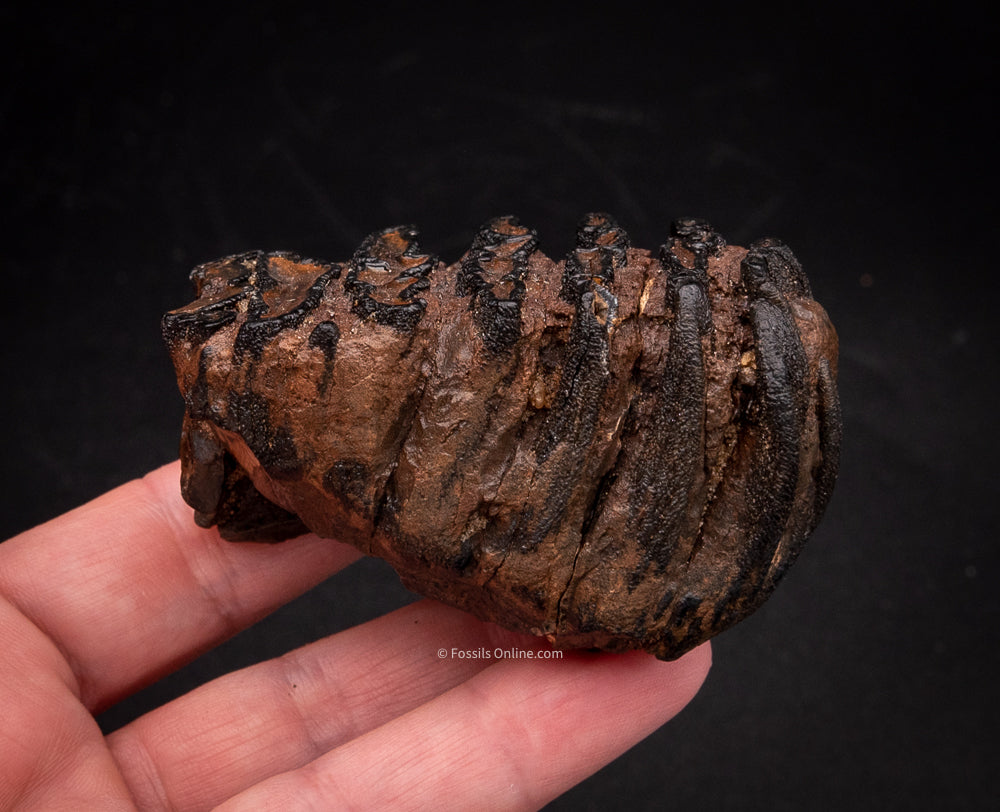





Super Fossil Baby Mammoth Tooth
Excellent, baby tooth from the Suwannee river . It has been glued back together.
The prehistoric proboscideans of the Southeast United States, including mammoths, mastodons, and gomphotheres, represent a remarkable chapter in the region's ancient ecological history. These large mammals, relatives of today's elephants, once roamed across this region, leaving behind a fascinating fossil record.
Mammoths and Mastodons: The Southeast United States was home to various species of mammoths and mastodons during the Pleistocene epoch, approximately 2.6 million to 11,700 years ago. Mammoths, adapted to colder, open grasslands, were larger and had a diet primarily consisting of grasses. Mastodons, on the other hand, were smaller, had straighter tusks, and were more adapted to forested environments, feeding on a mix of leaves, twigs, and branches.
Gomphotheres: A less known but equally important group of proboscideans in this region were the gomphotheres. These ancient creatures, which existed from the Neogene period into the Pleistocene, were smaller than mammoths and mastodons and were characterized by having four tusks – two on the upper and two on the lower jaws. Gomphotheres were likely more versatile in their diet, feeding on a variety of vegetation including leaves, fruits, and aquatic plants.
Habitat: The Southeast United States offered a diverse range of environments, from dense forests to sprawling grasslands, accommodating the varied lifestyles of these proboscideans. The region's rich flora supported these large herbivores, making it a hotbed for proboscidean diversity.
Discovery and Fossils: The discovery of proboscidean fossils in the Southeast has been extensive, with finds including tusks, teeth, and bones unearthed in various locations. These fossils provide critical insights into their anatomy, ecology, and evolution. The presence of gomphothere fossils, in particular, highlights the ecological diversity of the area during the Pleistocene.
Extinction: The end of the Pleistocene epoch brought significant climatic changes, contributing to the extinction of these magnificent creatures. Additionally, the arrival of human populations and the resulting hunting and habitat changes played a role in their disappearance.
The study of these prehistoric proboscideans, including mammoths, mastodons, and gomphotheres, in the Southeast United States, offers a window into a past world where these giant creatures dominated the landscape. Their fossil record is a testament to the rich and dynamic ecosystems that existed in this region during the Pleistocene.
AGE
Pleistocene
LOCATION
Suwannee River
Size
2.61”x 1.43"
Choose options






